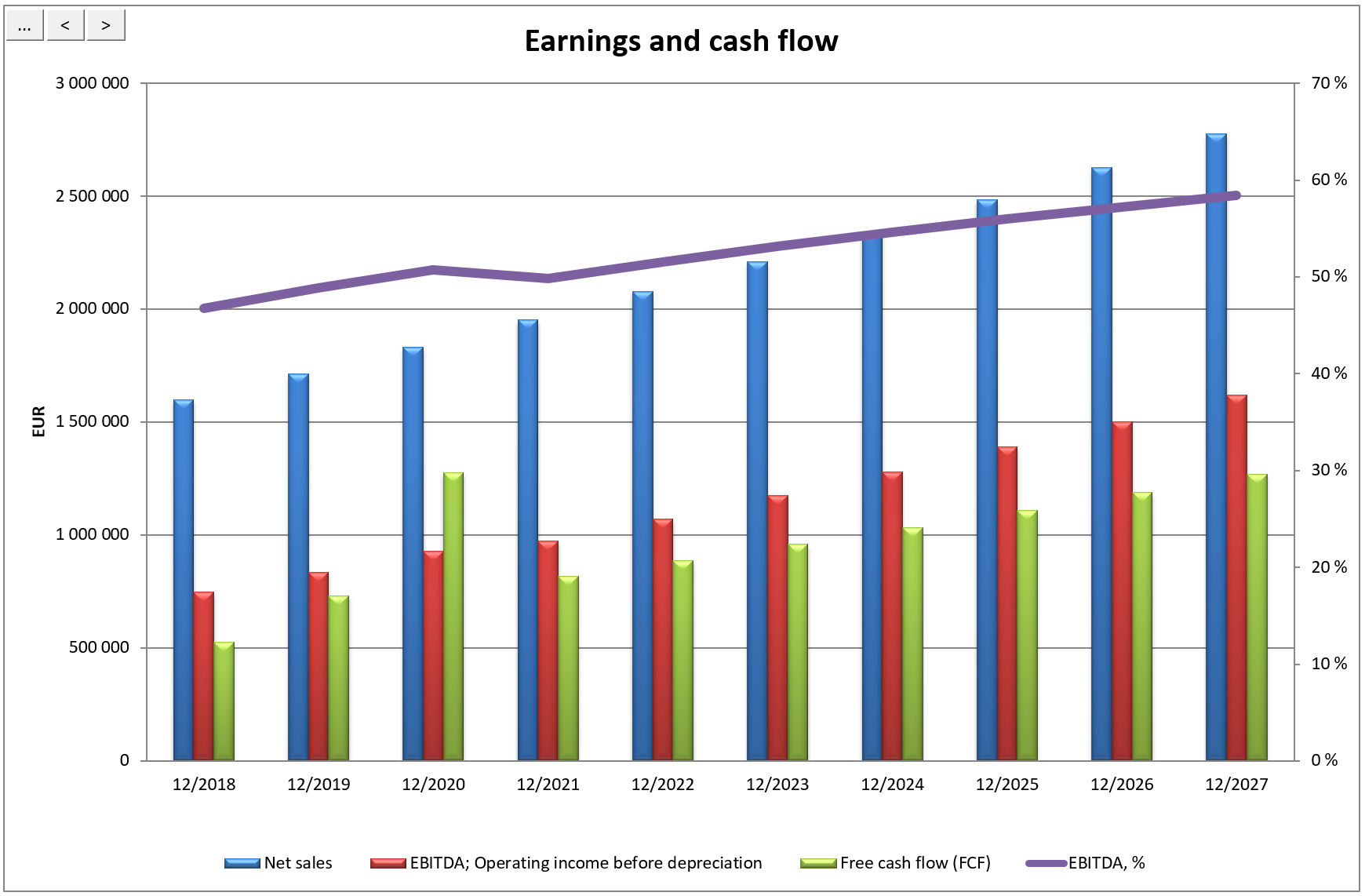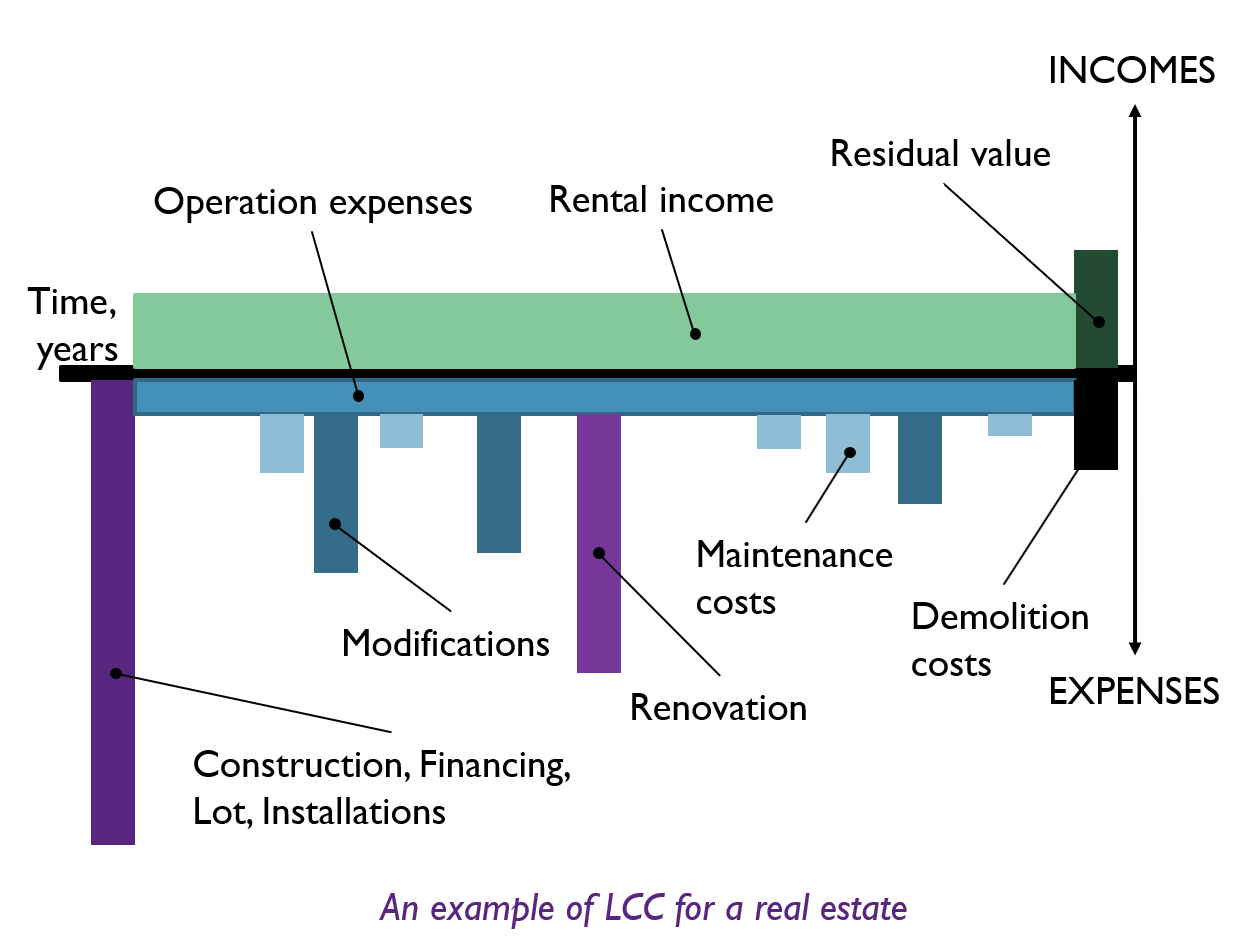DEFINITION OF FINANCIAL MODELLING
Financial Modelling is the task of building an abstract representation (a model) of a real world financial situation. [1] This is a mathematical model designed to represent, in a simplified form, the performance of a financial asset, a business, project or any other investment.
[1] Wikipedia
Applications of financial modelling
- Capital budgeting and investment feasibility studies
- Economic analysis of projects
- Business planning, budgeting and forecasting
- Valuations of businesses and assets
- Life-cycle costing
- Strategic scenario planning
- Project finance and corporate financial planning
Implementation in practice
Capital budgeting and investment feasibility studies
Typically, in any organization, investment possibilities of significant size, need to be revised carefully regarding technical-, risk-, market-, environmental- and economic factors. Also, non-economic benefits should be considered, but the focus is on economic factors. As the decision will be made regarding future actions, often the decisive numbers can’t be found in historical data. The new project/ business venture must be modelled based-on: offers, forecasts and qualified guesses. A financial investment model needs to be done and revised many times before the investment request can be handled by management.
Economic analysis of projects
For bigger projects with long-term impacts, the situation is very much the same as with capital budgeting. Projects can also often be short-term and could have no capital expenditures, however, short-term projects still need to be modelled to simulate profitability and cash flows. The term is shorter, and the periods may be months or quarters, but otherwise, the modelling is done the same way to make sure the project gives the required return.
Business planning, budgeting and forecasting
When it comes to business planning, budgeting, and forecasting – the picture looks a little bit different. Although here the focus is also on financial statements and forecasting, the basis for the forecast is on actual data from accounting, with adjustment for changes. Close cooperation with accounting requires good integration with accounting. Especially if the actuals are updated monthly and the forecasts are adjusted regularly. Budgeting is often done per account, per month and per cost center with specific budgeting tools. Then the budget is compared with actual figures monthly.

Valuations of businesses and assets
Valuations of businesses are often done by analysts at investment banks and consulting companies with their own valuation models. The larger corporations have their own M & A departments as well. There is a need for small and mid-sized companies to be able to make their own in-house valuations easily. The basis for valuation is again financial modelling based on historical data plus forecasting, which gives a good estimate for coming cash-flows and some key-performance ratios. The ideal situation is when you get a valuation of your own business based on your long-term business planning.
Life-cycle costing
Too much focus is often put on the investment costs at the beginning, and too little on the use costs and maintenance costs later. Also, it is difficult to compare buying vs. leasing, unless you use financial modelling to generate the cash flows over the whole life-cycle of the object. The most reliable method to make cost comparisons of competing solutions is to estimate all costs over the whole life-cycle and then discount the cash flows of the alternatives to make a comparison.

Strategic scenario planning
When a business is making long-term plans, there are different paths to steer against. Each selected path opens new possibilities. It requires some high-level financial modelling for each scenario to consider the options that each path might open later. The tough part is to estimate the numbers, otherwise, it is normal financial modelling combined with probabilities and valuations of options.
Project finance and corporate financial planning
It doesn’t matter if the project economics are good – if you can’t finance it. Modelling project financing is the next step after profitability analysis. Often it is an iterative process to find the optimal financing. It requires some special knowledge and modelling capabilities to deal with complex banking conditions. Also, it is important to show the financing items correctly in financial statements and NPV calculations. When it comes to business planning, the challenge is even higher, as you have a whole portfolio of loans to model.
Financial modellers and the average Excel user
Financial modellers
There is a group of professional modellers that know both Microsoft Excel and Finance well. They understand relationships between variables, they understand sensitivity and how fluctuations in inputs will impact the outcomes and how they need to be modelled in Excel. They also understand what you need. They make compact, effective models that perform only the tasks needed. Consider yourself lucky if you have access to a real professional modeller.
The average Excel user
The rest, especially in finance, turn to Excel quite often to build the calculations and models we need to run our businesses. We create simple ad-hoc calculations fast, or build on our own models, continuously improving or simply growing them. We like to do it. Well not all, but quite a few enjoy it. We don’t count the hours spent. After a while when our model has grown and has been changed numerous times, we realize that we are losing the grip and that mistakes have happened. Oops!
The alternative – Invest for Excel® by DataPartner
Invest for Excel®– why?
What if you could save the time spent on building models? What if you could trust the calculations? What if you could focus on the business numbers instead? What if you could make sensitivity analysis in a click, without risking the original calculation? What if you could automatically get the correct financial statements? What if you could consolidate easily with eliminations of internal transactions? What if you had a project financing model integrated with your project model? What if your model included Monte Carlo analysis? What if you could compare alternatives easily to select the best option? I could continue for a long time, but I’m sure you get the picture.
Invest for Excel® – background
The first version of Invest for Excel® was published in December 1995, and since then the application has been continuously improved in close cooperation with our customers worldwide. Invest for Excel® was developed by DataPartner Oy in Finland, a company with 31 years of experience in financial modelling, supported by a network of 35 local partners in different countries. In the beginning it was designated for capital budgeting, but over the years it has developed into a general financial planning application used in all possible areas of financial modelling. Invest for Excel® is a leading product used by 1 700 organisations in 54 countries.
Invest for Excel® – what is it?
Invest for Excel® is a hybrid of Excel functionality and a standard software. The templates of Invest for Excel® include the complete structure of financial statements and project valuation. Invest for Excel® has been optimized for easy and fast modelling – it works for any industry and any type of project or business. You get right into business modelling without building the model or complex formulas. You also have the luxury of a long list of tools and functions that make your life easy – things you couldn’t create in your own model, even if you wanted to. And, it is all Excel-based! It is a familiar environment where you feel confident and it gives you the possibility to include your own sheets, -reports, -formulas, plus import and export your numbers. You still have all Excel functionality, plus you have the structure and tools of Invest for Excel®.
Curious to know more?
More info on Invest for Excel®: www.datapartner.fi
Download test version: https://www.datapartner.fi/download
Please feel free to contact me for questions or to book an online meeting:
Jens Westerbladh
e-mail: jw@datapartner.fi
Office phone: +358 19 54 10 112

